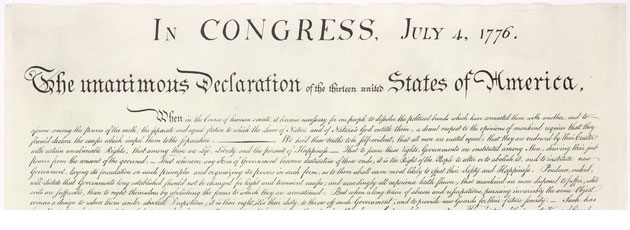Creator
The Universal Declaration of Human Rights (UDHR) is a milestone document in the history of human rights. Drafted by representatives with different legal and cultural backgrounds from all regions of the world, the Declaration was proclaimed by the United Nations General Assembly in Paris on 10 December 1948.
Purpose
As a response to the atrocities that happened during World War II, the UN decided their current charter was no sufficient. This declaration of human rights was the updated response.
To create “a common standard of achievements for all peoples and all nations. It sets out, for the first time, fundamental human rights to be universally protected.
This declaration is generally viewed to be the foundation of International Human Right Law

Manifesto
The manifesto consists of a preamble and 30 Articles. Below is a selection. Download the full list at the UN source link below.
Preamble (Selection)
Whereas recognition of the inherent dignity and of the equal and inalienable rights of all members of the human family is the foundation of freedom, justice and peace in the world,
Whereas disregard and contempt for human rights have resulted in barbarous acts which have outraged the conscience of mankind, and the advent of a world in which human beings shall enjoy freedom of speech and belief and freedom from fear and want has been proclaimed as the highest aspiration of the common people,
Whereas it is essential, if man is not to be compelled to have recourse, as a last resort, to rebellion against tyranny and oppression, that human rights should be protected by the rule of law,
Whereas it is essential to promote the development of friendly relations between nations,
Now, Therefore THE GENERAL ASSEMBLY proclaims THIS UNIVERSAL DECLARATION OF HUMAN RIGHTS as a common standard of achievement for all peoples and all nations, to the end that every individual and every organ of society, keeping this Declaration constantly in mind, shall strive by teaching and education to promote respect for these rights and freedoms and by progressive measures, national and international, to secure their universal and effective recognition and observance, both among the peoples of Member States themselves and among the peoples of territories under their jurisdiction.
Articles (Selection)
Article 1 – All human beings are born free and equal in dignity and rights. They are endowed with reason and conscience and should act towards one another in a spirit of brotherhood.
Article 2 – Everyone is entitled to all the rights and freedoms set forth in this Declaration, without distinction of any kind, such as race, colour, sex, language, religion, political or other opinion, national or social origin, property, birth or other status. Furthermore, no distinction shall be made on the basis of the political, jurisdictional or international status of the country or territory to which a person belongs, whether it be independent, trust, non-self-governing or under any other limitation of sovereignty.
Article 3 – Everyone has the right to life, liberty and security of person.
Article 4 – No one shall be held in slavery or servitude; slavery and the slave trade shall be prohibited in all their forms.
Article 5 – No one shall be subjected to torture or to cruel, inhuman or degrading treatment or punishment.
Article 6 – Everyone has the right to recognition everywhere as a person before the law.
Article 7 – All are equal before the law and are entitled without any discrimination to equal protection of the law. All are entitled to equal protection against any discrimination in violation of this Declaration and against any incitement to such discrimination.
Article 10 – Everyone is entitled in full equality to a fair and public hearing by an independent and impartial tribunal, in the determination of his rights and obligations and of any criminal charge against him.
Article 13 – (1) Everyone has the right to freedom of movement and residence within the borders of each state. (2) Everyone has the right to leave any country, including his own, and to return to his country.
Article 14 – (1) Everyone has the right to seek and to enjoy in other countries asylum from persecution. (2) This right may not be invoked in the case of prosecutions genuinely arising from non-political crimes or from acts contrary to the purposes and principles of the United Nations.
Article 15 – (1) Everyone has the right to a nationality. (2) No one shall be arbitrarily deprived of his nationality nor denied the right to change his nationality.
Article 19 – Everyone has the right to freedom of opinion and expression; this right includes freedom to hold opinions without interference and to seek, receive and impart information and ideas through any media and regardless of frontiers.
Article 30 – Nothing in this Declaration may be interpreted as implying for any State, group or person any right to engage in any activity or to perform any act aimed at the destruction of any of the rights and freedoms set forth herein.
Source
https://www.un.org/en/universal-declaration-human-rights/
General background on Wikipedia
Comment
This is a great example of creating a new context by raising the standards that you hold dear.
During World War II, the allies had adopted the Four Freedoms – freedom of speech, freedom of religion, freedom from fear and freedom from want.
When the atrocities committed by Nazi Germany became apparent, it was concluded that the UN charter did not go far enough.
This declaration was the updated result.
It’s also worth noting that this declaration has become the basis for international law.
International Human Rights Day – as celebrated on December 10 – marks the date that this charter was adopted by the UN.
More
UN Sustainable Development Goals

